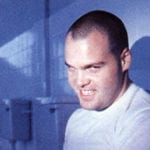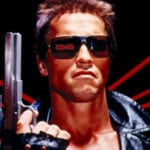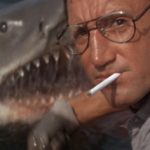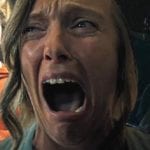 Crime
Crime  Crime
Crime  Technology
Technology 10 Hilariously Over-Engineered Solutions to Simple Problems
 Miscellaneous
Miscellaneous 10 Ironic News Stories Straight out of an Alanis Morissette Song
 Politics
Politics 10 Lesser-Known Far-Right Groups of the 21st Century
 History
History Ten Revealing Facts about Daily Domestic Life in the Old West
 Weird Stuff
Weird Stuff 10 Everyday Products Surprisingly Made by Inmates
 Movies and TV
Movies and TV 10 Actors Dragged out of Retirement for One Key Role
 Creepy
Creepy 10 Lesser-Known Shapeshifter Legends from Around the World
 Animals
Animals 10 Amazing Animal Tales from the Ancient World
 Gaming
Gaming 10 Game Characters Everyone Hated Playing
 Crime
Crime 10 Terrifying Serial Killers from Centuries Ago
 Technology
Technology 10 Hilariously Over-Engineered Solutions to Simple Problems
 Miscellaneous
Miscellaneous 10 Ironic News Stories Straight out of an Alanis Morissette Song
Who's Behind Listverse?

Jamie Frater
Head Editor
Jamie founded Listverse due to an insatiable desire to share fascinating, obscure, and bizarre facts. He has been a guest speaker on numerous national radio and television stations and is a five time published author.
More About Us Politics
Politics 10 Lesser-Known Far-Right Groups of the 21st Century
 History
History Ten Revealing Facts about Daily Domestic Life in the Old West
 Weird Stuff
Weird Stuff 10 Everyday Products Surprisingly Made by Inmates
 Movies and TV
Movies and TV 10 Actors Dragged out of Retirement for One Key Role
 Creepy
Creepy 10 Lesser-Known Shapeshifter Legends from Around the World
 Animals
Animals 10 Amazing Animal Tales from the Ancient World
 Gaming
Gaming 10 Game Characters Everyone Hated Playing
Top 10 Behind the Scenes Tales About Tarantino Movies – 2020
Quentin Tarantino started getting serious about writing and directing screenplays in his mid-twenties. At the time, he was working at a video rental store in Manhattan Beach, California, cutting his teeth on an amateur production called My Best Friend’s Birthday. The project was made on a shoe-string budget, using a basic 16mm camera and a cast of rookies from his acting classes.
Since that time, Tarantino has gone from strength to strength. His filmography adds its own blood-soaked spin to a number of tried and tested genres, from the Spaghetti Western-inspired Django Unchained to the Samurai swordsmanship of Kill Bill. Today, each of Tarantino’s films nets hundreds of millions at the box office and the director has become a cultural phenomenon in his own right.
Seeing as Tarantino has previously talked about retiring after his tenth film, threatening instead to focus on writing novels and theater productions, now is perhaps a good time to explore the film legend’s impressive body of work.
Spoiler and gore warning: The entries listed contain spoilers and material of a graphic nature.
Top 10 Bizarre Award Show Moments
10 Reservoir Dogs Prompted Walkouts
In 2017, Tarantino reunited with the cast of Reservoir Dogs to celebrate the movie’s 25th anniversary. There, he spoke of the controversy surrounding the infamous torture scene, where Mr. Blonde (Michael Madsen) hacks off a police officer’s ear lobe and douses him in gasoline. While showcasing his work at various film fests, Tarantino would count the number of people who walked out during the torture scene. “33 was the largest,” said the director.
Apparently, the scene was even too much for the legendary horror filmmaker Wes Craven, who walked out of a screening at the Sitges Film Festival in Spain. “The f—king guy who did The Last House on the Left walked out?! My movie was too tough for him,” explained Tarantino. At the time, Tarantino told a young Steve Buscemi, who played Mr. Pink, that the walkouts were a metric of success.[1]
9 Django Unchained Battered DiCaprio
Django Unchained sees Leonardo DiCaprio assume the role of Calvin Candie, a sadistic plantation owner with a penchant for violence. While conducting a business deal with Django, the ruthless slaver goes on a rant about phrenology, the pseudoscientific notion that the contours of a person’s skull are indicative of their cognitive ability. During a rather intense monologue, DiCaprio slams his hand against a dinner table, accidentally striking a cordial glass. The glass smashes to pieces and lacerates the actor’s hand.
“He kept going,” explained one of the film’s producers, Stacey Sher. “He was in such a zone. It was very intense. He required stitches.” After the clapperboard sounded, the entire crew gave DiCaprio a standing ovation.
But that wasn’t the only time DiCaprio was injured on set. During the film’s closing act, his character threatens to kill one of the slaves with a hammer. This scene did not go according to plan during rehearsal, however. While DiCaprio was flailing his limbs, the weapon broke and hit him over the head. The hammer was eventually replaced with a foam replica for the final shoot.[2]
8 A Lot of Thought Went into Kill Bill’s Blood
The penultimate fight sequence in Kill Bill: Volume 1 ranks as one of the bloodiest spectacles in movie history. In avenging the death of her unborn child, Beatrix “The Bride” Kiddo (Uma Thurman) ends up mowing down dozens of yakuza members with a Samurai sword. As Kiddo dismembers her way through the Crazy 88 gang, geysers of blood fire in every direction. It turns out that the crew used some pretty old school methods to get the desired effect. “You can’t pour this raspberry pancake syrup on a sword and have it look good. You have to have this special kind of blood that you only see in Samurai movies,” Tarantino explained.
The team initially attempted to use a hydraulic system to simulate blood spurting from an impaled gang member. Time and time again, the technique failed. Just as Tarantino’s rage was beginning to bubble over, he drew inspiration from an old mentor. The crew fashioned squibs from Chinese condoms, filling them with fake blood and bursting them at the right moment. Tarantino claims he picked up the trick from Chang Cheh, who famously used the technique while filming his kung-fu masterpiece Vengeance. “I felt like Chang Cheh talked to me. He came to me and said ‘Hang in there Quentin! It’s going to work out. It’s bound to explode the right way once.’”
All in all, around 100 gallons of blood was used for the fight. The scene worried executives at the Motion Picture Association, who told the studio to tone down the gore for the US version of the film. Tarantino compromised, making some of the scenes black and white and removing others.[3]
7 The Inglourious Basterds Choking Scene
Inglourious Basterds follows the antics of a group of Nazi-scalping spies in 1940s France. The Basterds are tasked with assassinating Adolf Hitler as he watches a propaganda film at a cinema in occupied Paris. But an eagle-eyed SS officer quickly deduces the identity of one of the moles, a German actress-turned-spy named Bridget von Hammersmark. The Nazi, played by Christoph Waltz, ends up strangling Hammersmark in one of the cinema’s offices, a scene that involved actual strangulation.
Tarantino approached the actress who played Hammersmark, Diane Kruger, and said “[L]ook, I’ve got to strangle you.” The filmmaker wanted to perform the act, under the supervision of a stuntman, to make certain the scene was convincing to the audience. “If it’s just a guy with his hands on your neck, not putting any kind of pressure and you’re just doing this wiggling death rattle… you’re not going to get the blood vessels bulging, or the eyes filling it with tears, and you’re not going to get the sense of panic that happens when your air is cut off.”
A similar decision was made while shooting Kill Bill: Volume 1. On this occasion, it was actually Uma Thurman’s suggestion to have someone choke her in real life. Tarantino ended up performing the unpleasant act, ensuring close-ups of the shot looked suitably horrific.[4]
6 Danny DeVito Saved Pulp Fiction
Pulp Fiction’s unusual narrative structure and graphic nature meant few distributors were willing to take a risk on the project, leaving the film with severe financing issues. At the time, Hollywood executives were getting flak from the White House over the violence portrayed in their movies. The former head of TriStar, Mike Medavoy, described his initial reaction to seeing the script: “[T]hey shoot someone in the back of the car and there are pieces of his brain splattered all over. The director and I had a discussion, and I said, ‘That is really over the top, and you’re going to get blowback.’” TriStar pulled financing for the film, and Tarantino was left with few options.
Fortunately, Danny DeVito came to the rescue. DeVito was heading up a production company called Jersey Films. As Pulp Fiction’s executive producer, he pushed hard for the film’s success and managed to secure funding from Miramax. The now disgraced film producer Harvey Weinstein personally looked over the script and gave it the green light.
In an unusual turn of events, Disney played a small role in Pulp Fiction’s success. In 1993, Disney purchased Miramax for $60 million. While Miramax maintained autonomy over all of its projects, Weinstein felt it necessary to get Disney on board. “[The studio chairman] read it and said, ‘Easy on the heroin scene, if you can, but that is one of the best scripts I have ever read,’” he explained.[5]
Top 10 Iconic Behind-The-Scenes Photos From Hit Movies
5 Once Upon a Time Was Cancelled in China
The release of Once Upon a Time in Hollywood was cancelled in China in 2019, mere weeks before it was due to hit the silver screen. While no official explanation was given, the decision came shortly after Bruce Lee’s daughter, Shannon, filed a complaint about the film with China’s National Film Association.
Tarantino’s ninth installment features a parody scene where Bruce Lee meets a stunt double named Cliff Booth (Brad Pitt). While on the set of The Green Hornet, the famed martial artist tells his crewmates that he could beat Muhammad Ali in a fight. “You’re a little man, with a big mouth and a big chip,” responds Booth. A sparring match ensues, during which Bruce Lee is flung into the side of a vintage car.
Shannon was unimpressed with Tarantino’s portrayal of her late father, describing the character as an “arrogant asshole who was full of hot air.” Tarantino defended the scene at a press conference in Moscow, describing Lee as “kind of an arrogant guy.” He continued: “I didn’t just make a lot of that up. I heard him say things like that, to that effect.”
The Chinese government allegedly instructed the studio to remove the scene entirely, along with changes to some of the film’s more violent depictions. Tarantino, with the backing of Sony Pictures, stood his ground and refused to censor the film.[6]
4 Sean Penn Inspired Death Proof
Death Proof is a bit of a departure from your standard Tarantino film. The 2007 exploitation flick takes inspiration from the gnarly B-movie titles that were standard fare across the American grindhouses of the ‘60s and ‘70s. The writer and director even went so far as to physically scratch the original footage to achieve the same low-grade image typical of the genre.
The idea for Death Proof came shortly after the release of Pulp Fiction. One night, while knocking back a few drinks in a bar with actor Sean Penn, Tarantino was musing over what type of car he wanted to buy. In Pulp Fiction, Butch (Bruce Willis) crashes his car at an intersection. Hoping to avoid the same grisly fate, Tarantino vowed to pick up a Volvo, admiring the car maker’s track record in safety. But Sean Penn had another suggestion: “[H]e said ’Well, you could take any car and give it to a stunt team, and for $10,000 or $15,000, they can death-proof it for you.’ Well, that phrase ‘death proof’ kinda stuck in my head.”[7]
3 Kill Bill: Volume 2 Cut Entire Fight Sequences
It’s fair to say that Kill Bill: Volume 2 was fairly subdued compared to its predecessor. The original script was a lot more action-packed, featuring extra fight scenes between Bill and various other characters. One sequence was supposed to show Beatrix clashing with Bill on a moonlit beach, her wedding dress flowing in the breeze. Another pits Bill against a disgruntled Samurai warrior, played by Michael Jai White, who accuses the kung fu legend of killing his master. While the scene was cut to improve the film’s overall pacing, it eventually re-emerged as a DVD bonus feature.
An entire chapter, Yuki’s Revenge, is also missing. In Volume 1, Beatrix defeats a sociopathic school girl called Gogo Yubari, impaling her with a nail-studded chair leg. Gogo’s sister, Yuki, was supposed to hunt down her sibling’s killer in the sequel. Yuki would confront Beatrix at a motel in Los Angeles, destroying her notorious Pussy Wagon with a blast of gunfire. The drug-addled youngster proceeds to chase her nemesis through a residential area, lobbing grenades as she goes. She ultimately fails to outsmart the Bride, however, and dies in a hail of bullets.[8]
2 Jackie Brown is Set in a Different Tarantino Universe
Most of Tarantino’s films are set in one universe, the Realer than Real Universe. From Reservoir Dogs through to Once Upon a Time in Hollywood, these films are all interconnected in some way. That’s why props from one film are often seen in another. Many of the characters are even related. For example, Pulp Fiction’s Vincent Vega is the brother of Reservoir Dogs’ Victor Vega (Mr. Blonde). This universe is supposed to be a hyper-exaggerated version of our own, often involving fictional characters that interact with figures from real historical events (think Lieutenant Aldo Raine and his men assassinating Adolf Hitler in Inglourious Basterds).
Then there is the Movie Movie Universe, which includes Kill Bill, Natural Born Killers, and From Dusk Till Dawn. These movies are what the characters from the Realer than Real Universe would watch if they went to the cinema – a sort of universe within a universe.
A third and final universe also exists, called the Elmore Leonard Universe. Only one of Tarantino’s films has the distinction of appearing in this universe: Jackie Brown. The reason is simple. Jackie Brown is the only film based on the source material of another artist, the American novelist Elmore Leonard. Leonard’s 1992 crime novel Rum Punch tells the story of an airline stewardess who gets caught smuggling drug money. Tarantino simply adapted the work, altering the names of some of the characters and changing the story’s setting.[9]
1 Hateful Eight’s Panavision Roadshow Cost Millions
Tarantino shot the Hateful Eight using 65mm Panavision film cameras that were outfitted with special anamorphic lenses. This produced an extreme widescreen format, perfect for capturing the sweeping vistas of the San Juan mountain range in southwest Colorado. Such an ambitious undertaking involved a lot of blood, sweat, and money. The old Panavision cameras, many of which were used by filmmakers during the 1950s, were rebuilt and modified. The film magazines were also altered to accommodate Tarantino’s lengthy shoots, replacing the standard 1,000-foot magazines with special 2,000-foot versions. And then there was the matter of the screening equipment.
The studio tasked Boston Light & Sound (BL&S) with fitting 100 theaters with the equipment needed for a roadshow of ultrawide screenings. The company hunted down vintage projectors from dealers, trained projection workers on how to use the old film format, and readied the theaters for a week-long run of Panavision screenings. Many venues even switched out their screens. The Music Box Theater in Chicago added a whopping 40-foot screen for the event.
All in all, the studio spent $11 million bringing Ultra Panavision back to the silver screen. Only ten films had used the format prior to The Hateful Eight. Thankfully, a number of new releases have since benefited from Tarantino’s experiment. Warner Brothers, for example, bought many of the studio’s projectors for the Panavision screening of its World War I epic Dunkirk.[10]
Top 10 Iconic Fever Dreams Set In Los Angeles








